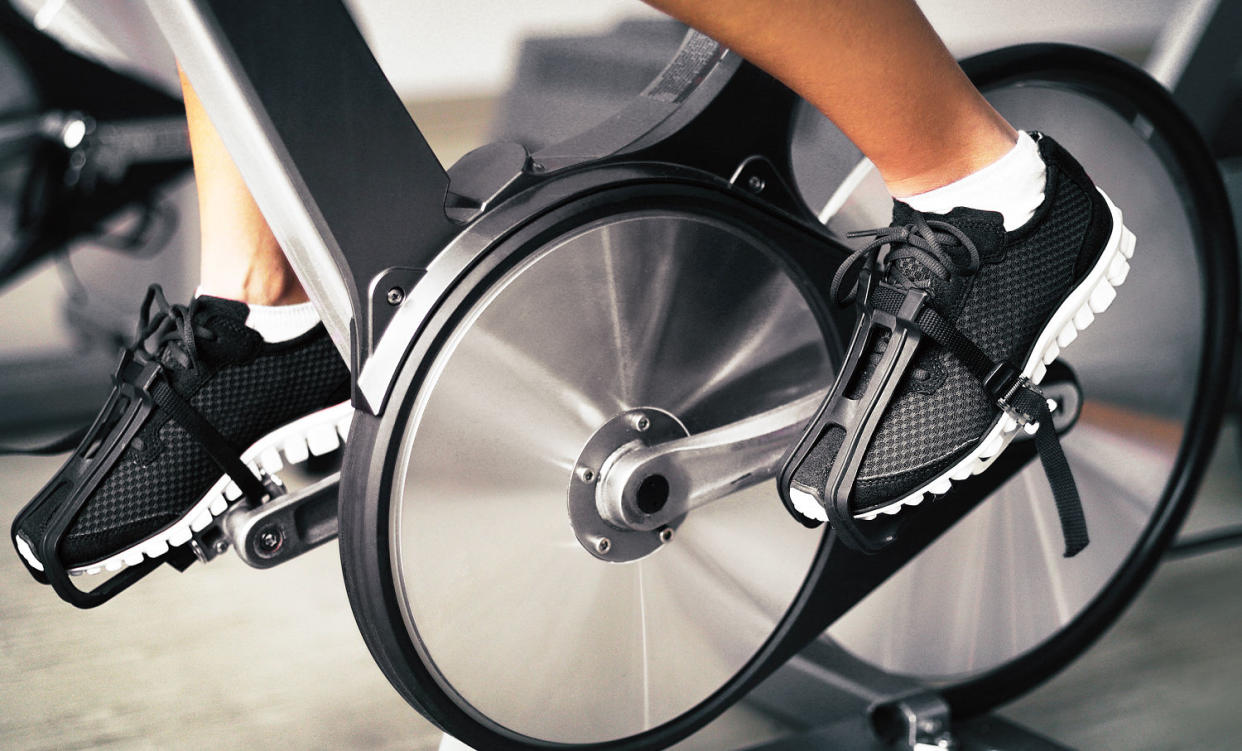This 1 exercise may reduce your risk of knee pain and arthritis as you age

Biking is a great low-impact cardio exercise, but it may also help prevent knee pain and arthritis, new research shows.
People who participated in biking or cycling at any point in their lives were 17% less likely to experience knee pain and 21% less likely to develop osteoarthritis in the knee joint, according to a new study published in Medicine & Science in Sports & Exercise.
The study included over 2,600 participants in their sixties, who were asked how often they biked or cycled during four time periods through their lifetime: ages 12 to 18, 19 to 34, 35 to 49, and age 50 and older.
Researchers analyzed data and compared outcomes for knee pain and osteoarthritis of the knee joints between participants who had a history of bicycling and participants who do not bike.
“Based on our observational study, bicycling over a lifetime is associated with better knee health, including less knee pain and less damage to the joint,” the study’s lead author, Dr. Grace Lo, chief of rheumatology at the Michael E. DeBakey VA Medical Center in Houston, told NBC News.
“The more periods of time in life a person spent bicycling, the less likely she or he had knee pain and signs of osteoarthritis," Lo said.
Arthritis is a term used to describe the inflammation, pain and swelling of one or more joints. The most common form of arthritis is osteoarthritis, also known as degenerative joint disease.
Osteoarthritis occurs when the cartilage which cushions the bones that come together to form the knee joint wears down, causing the bones to rub together, per the Cleveland Clinic. This can cause pain, stiffness, and limited mobility.
Anyone can develop osteoarthritis, but the risk increases with age and symptoms typically appear in the fifties, TODAY.com previously reported. Other risk factors include previous joint injury or overuse, being overweight, and a family history of osteoarthritis, per the U.S. Centers for Disease Control and Prevention.
In the study, researchers took X-rays of the participants to look for signs of arthritis in the knee joints. They found that people who participated in bicycling were less likely to have X-ray evidence and symptoms of osteoarthritis in the knees than non-bicyclers.
While osteoarthritis cannot be cured or reversed, lifestyle changes may help reduce symptoms. People with knee arthritis are often told to move their joints and engage in activities such as cycling, swimming, or walking — as opposed to high-impact activities like running or tennis, per the Cleveland Clinic.
Previously, it wasn't clear which low-impact exercise may be most beneficial for knee health, until now.
The observational study did not prove cause and effect or explain why biking is protective, but the findings did suggest there is an association between cycling and less knee pain and damage.
Biking and cycling combine cardio and strength training, but are low-impact and put less pressure on the joints. “We do know that activities that are non-weight bearing are less likely to cause pain. That’s probably a reason why people have less pain when bicycling as compared to other activities,” Lo said.
Biking also builds and strengthens the muscles around the knees, without the pounding and stress on the joints from exercises such as running, NBC News previously reported.
According to Lo, participants who biked between 12 and 18 — when most reported a history of biking — may have built up their quadricep muscles, and that this development remained even if they stopped biking as they got older.
The study did not look at the differences between outdoor biking and indoor cycling or suggest how often people should bike. However, experts told NBC News that people who aren't active should start with two to three days of low-intensity biking.
According to the Physical Activity Guidelines for Americans, adults should get at least 150 to 300 minutes of moderate-intensity aerobic activity per week or at least 75 to 150 minutes of vigorous-intensity physical activity per week.
Ideally, activity should be spread throughout the week — for example, 30 minutes of biking or cycling five days a week.
When riding a bike outside, always remember to wear a helmet, obey traffic signs and signals, and use a bike lane when possible.
If you are cycling indoors, make sure to adjust the seat and handlebars to the appropriate height to avoid injury. (Here's a tutorial for setting up your spin bike and workouts for beginners.)
If you have concerns about knee pain, always talk to your doctor.
This article was originally published on TODAY.com

